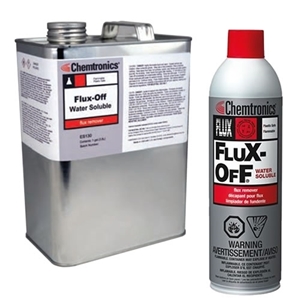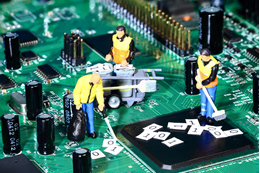Flux-Off Water Soluble
Plastic safe flux remover for cleaning water-soluble flux
The Flux-Off® Water Soluble is a proprietary blend of powerful cleaning solvents. This defluxing agent removes R, RMA, RA, OA, and synthetic flux residues, as well as ionic and non-ionic soils.
Features & Benefits
- Safe on plastics
- Evaporates quickly, leaves no residues
- Also removes R, RMA, RA, and synthetic flux residues
- Penetrates hard to reach areas
- Excellent material compatibility
- Non-corrosive formulation
- Flammable
- All-Way Spray valve - even sprays upside down
Applications
- Cleans water soluble fluxes
- Safe for use on water sensitive components
- Also cleans rosin-based flux
| TDS | |
| REGS | |
| SDS | |
| Categories |
| Shelf Life | 5 yrs. unopened and 2 yrs. opened |
|---|---|
| Call-outs | Ford - 038575 |


